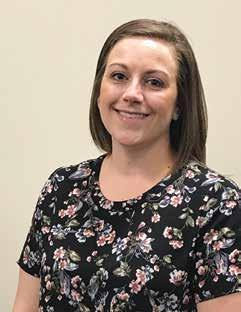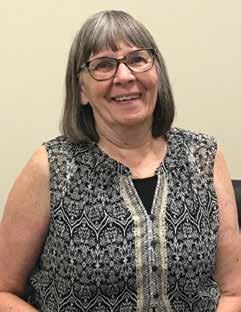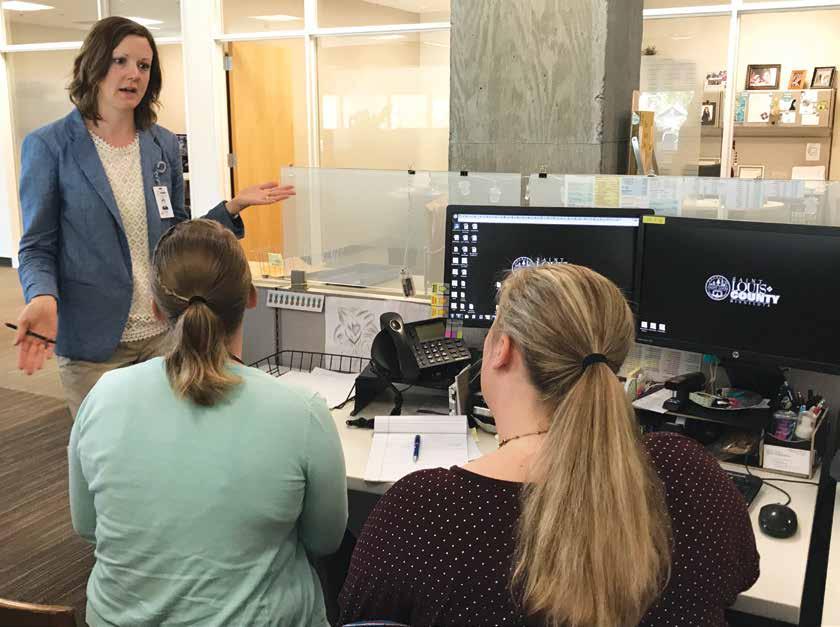
3 minute read
Three battle lines to fight opioid abuse

By Celia Tarnowski
Health workers hope to make most of new grant money
St. Louis County has the highest rate of opioid overdose deaths in Minnesota, according to the most recent data, through 2015. This alarming statistic illustrates the need to focus on opioid abuse, as overdose deaths in the county catapulted from zero in 2002-10 to 64 between 2011-15.
on three goals. Jana Blomberg, a public health educator with the county, outlined the initiative. She said the first goal is to partner with health care providers so anyone who prescribes opioids is aligned with current best practices. The second goal is to decrease the supply of opioids circulating illegally by promoting safe disposal of unused pills. The third goal is to integrate referrals for treatment into public health home visits and other health care systems.
Minnesota’s opioid prescriber guidelines and protocols are a touchstone that can bring people who treat and prescribe medication into alignment with state directives, decreasing the chance of abuse. The goal is for health care providers to use mindful and safe judgment when prescribing opioids for pain management.
St. Louis County is one of two counties in the state chosen to pilot opioid prevention methods through the Statewide Health Improvement Partnership (SHIP) through the Minnesota Department of Health.
The county plans to use a tiered approach that will focus
“We will be offering support wherever it is needed,” Blomberg said of the SHIP grant initiative. Another important goal of the program is decreasing the steady stream of medications that circulate. Proper storage and disposal of unused medicine are critical. Unused medication that’s left in your medicine cabinet, thrown in the garbage, or shared with others are ways that opioids can be channeled from the prescription’s original recipient into the hands of someone who will abuse them. Any unused medication should be brought to your local drop-off sites (WLSSD, for example).
“Proper disposal of unused medicine is a key strategy for harm reduction and prevention,” said Linnea Mirsch, director of St. Louis County Public Health & Human Services. “We have to be more creative in rural communities to make it happen. We’re working to make sure we eliminate barriers.”
Being aware of your current medication is also vital in keeping your medication secure. You should know the number of prescription medications that are in your home and keep tabs on how many pills you have for each prescription, so you’re aware if some go missing. Just like anything else that’s valuable, your medication should be kept in a secure manner.
Fostering partnerships with area organizations is one way that St. Louis County has made strides in fighting opiate abuse. Mirsch said these connections contributed to the county being well-placed to take on the SHIP grant.


“St. Louis County was well positioned … because of our existing partnerships with qualified agencies,” she said. “We have plans, we have strategies, we know gaps, and we know key places and key communities where we have things to do.”

An example of their partnership in action is the Substance Abuse Prevention & Intervention Initiative, started in 2014 by the St. Louis County Board. SAPII focuses on prevention, intervention and education.

Marcia Gurno, a county social worker in Duluth, is an original SAPII team member and has been coordinating the grant money received for the opioid prevention efforts. Gurno said she’s excited about the success the county has seen with the Screening, Brief Intervention, and Referral to Treatment (SBIRT) initiative and the potential to build on that success. One example is Pathfinder, a specialized opioid withdrawal unit that opened in November 2017.

“When you look at other addictions, and you look at opioids, the window of opportunity to provide treatment is much smaller,” she said. “In the past, if somebody came in with an opioid use disorder, actively using, and said, ‘I want treatment today,’ there was no way to get them into treatment. Now, we can contact Pathfinder, and they can get services on the spot.”
Continued on page 32-33


Gurno, who has been training with the SBIRT model for the past four years, credits a broad range of positive results. These include a decrease in drug and alcohol abuse, a reduction in drug-related incidents such as accidents, injuries, DUIs and medical issues, as well as improved neonatal outcomes.
“It’s screening for risky substance use to try and intervene before it goes through the continuum of use, from experimental all the way to addiction,” she said. “There are places at each point of that continuum to do prevention and intervention work.”

Over the course of the next year, Blomberg will collect data on the pilot program to share with the state.
“There are organizations around the county and state that are working on similar strategies,” she said. “My goal with this pilot project is to help community partners fill the gaps in areas where it’s needed and to support these organizations in areas they already have progress.” D
Celia Tarnowski is a college instructor and has worked as a freelance writer and journalist for 30 years.










